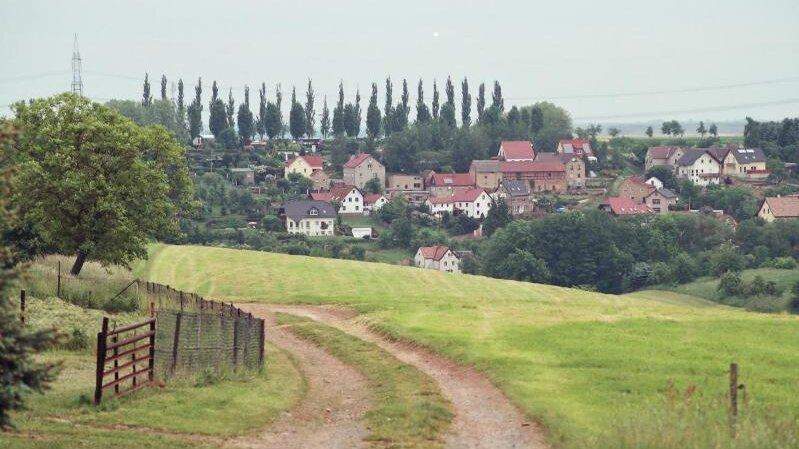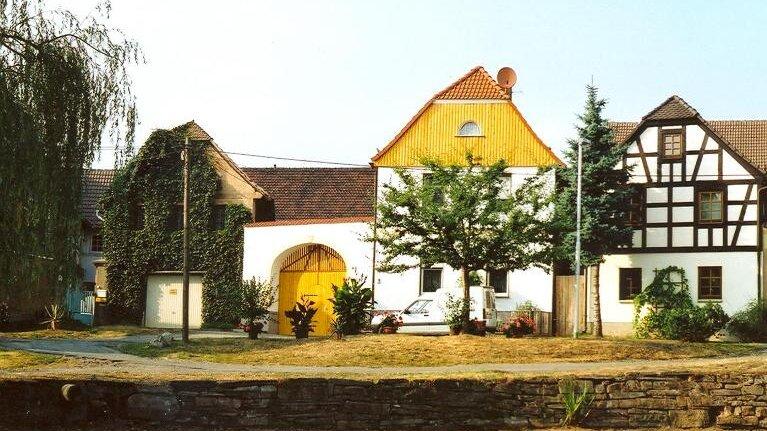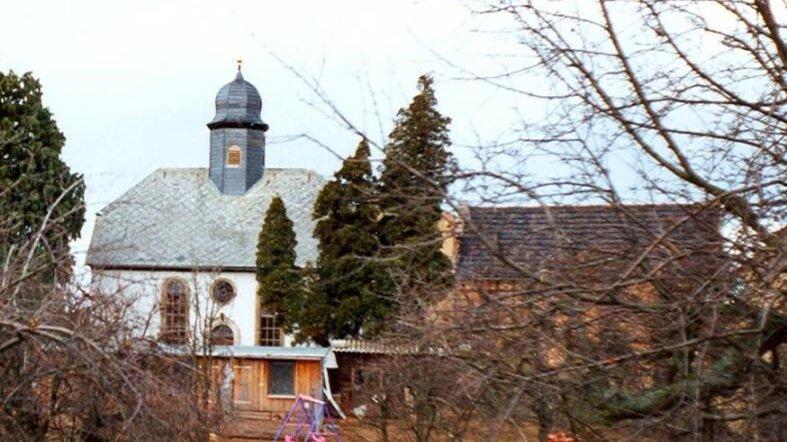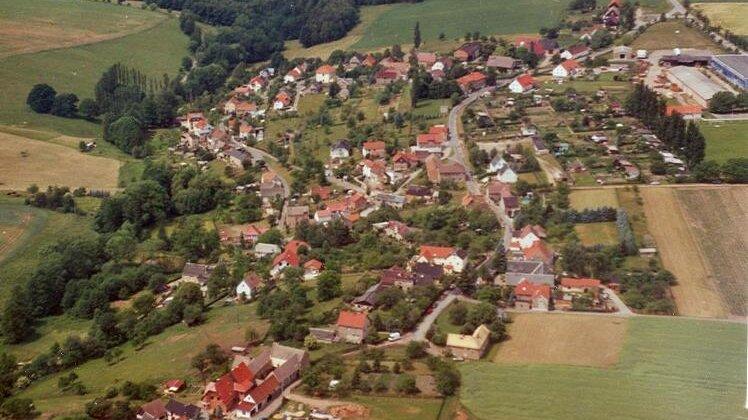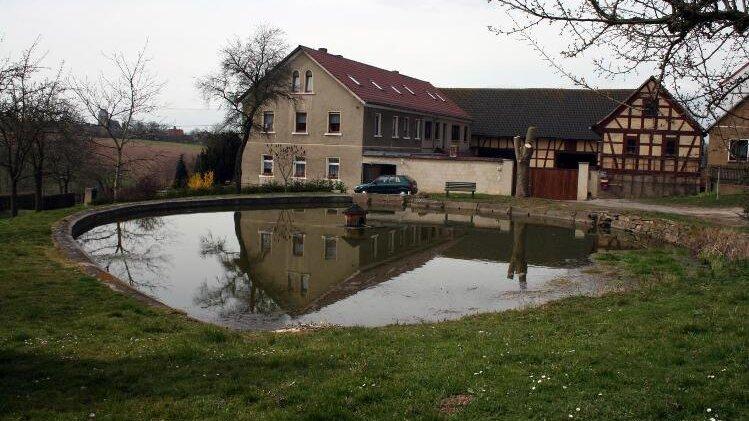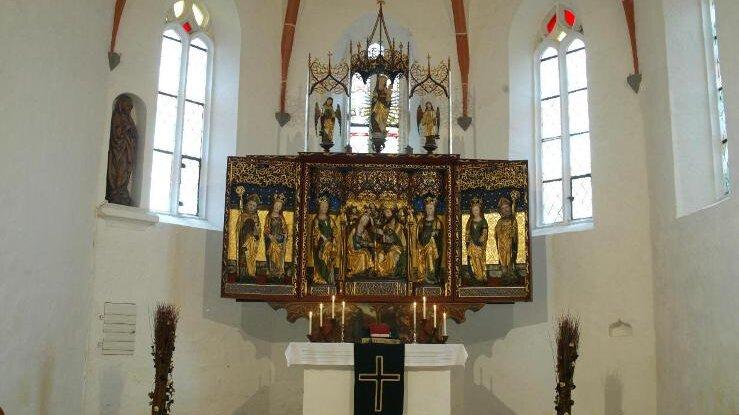Falka district
![[Translate to Englisch:] . © Funny Thibullt](/_next/image?url=https%3A%2F%2Fcms.gera.de%2Ffileadmin%2Fgera_de%2F_processed_%2F2%2F1%2Fcsm_Blick_von_Grossfalka_nach_Kleinfalke_Funny_Thibuult_a77599103f.jpg&w=3840&q=75)
data and facts
| Name of the district: | Falka |
| with the localities: | Kleinfalke, Großfalka, Niebra, Otticha |
| District of the city of Gera since: | 01.04.1994 |
| Surface area: | 719 ha |
| inhabitants (as at 31.12.2022): | 370 |
Location and transport connections
| Location | The district is located in the far south of Gera and has the highest elevation in the city of Gera at 354m above sea level. The district is predominantly characterized by agricultural land and landscape conservation areas. |
| Utilization: | The existing, established village areas have a strong village character and reflect the historical combination of agricultural and residential use in terms of design. The arable land is farmed by the Kauern agricultural cooperative. Small craft and service businesses are located in the area of the L 2321. |
| Landscape and site design: | The landscape is characterized by farmland and meadows. The integration of the established villages into the landscape is given due to the strong greening with trees and shrubs typical of the landscape. The street structure is village-like, the building structure of the districts is predominantly rural, in the form of farmsteads, detached houses and barns. The southern part of Falka is located in the "Amselgrund" landscape conservation area, which extends as far as Niebra. |
| Transport connections: | Falka can be reached via the L 2321. The inner connection is via municipal roads. Falka can be reached by public transport from the Wendschleife Zwötzen every hour on bus line 18 operated by GVB GmbH. |
History
History Falka
(Author: Herbert Dietrich, District mayor)
Großfalka
Großfalka was first mentioned in 1209 as "Falkovie" in the charter of the Mildenfuhrt monastery. The village was a farming village that became famous for its sandstone quarries. Today's Kleinfalke consisted of the twin villages of Kleinfalke and Wüstfalke. Falke (Falkenau) was first mentioned in 1308 in a deed of gift from the imperial king Heinrich von Gera. A deed of confirmation from Hartmann von Burgau to the Cronschwitz monastery from the same year shows that the village was liable to pay interest to the monastery, which was probably the village of Kleinfalke.
It is certain that Wüstfalke already bore this name in 1533.
Kleinfalke
The landmark of Kleinfalke was the Bock windmill, which had stood on the road to Hilbersdorf since 1795 - unfortunately it was demolished in the mid-1970s. However, the memory of it still lives on in the former coat of arms and seal of the municipality, which shows a mill and a falcon respectively.
In 2009, a replica of the Bock windmill was erected at the entrance to Kleinfalke on the occasion of the 800th anniversary celebrations.
Otticha
Otticha, the small round village belonged to Reuß j.L. until 1919. The place names Utichow, Otti-chaw and Ottichen refer to the name Otto.
Niebra
The origin of the name Niebra has not yet been clarified - but it is probably of Sorbian origin. A special gem of the village is the fortified church, which is a listed building with all its furnishings, the valuable carved altar and the cemetery wall. The church was built at the beginning of the 15th century as it can still be seen today.
No less interesting was the 500th anniversary celebration "Marienalter" in 1998 in the church in Niebra, which was also organized on the initiative of the church and attracted a large number of visitors. Of the churches in and around Gera, only very few can boast a Gothic winged altar. Among them, the Marian altar in the Niebra village church is one of the most important masterpieces of the art with which our ancestors expressed their attitude to life half a millennium ago. The Niebra altar shrine was erected 500 years ago, in 1498, and today it still deserves not only contemplation and attention, but also reverent appreciation.
Until 1950, each of the above-mentioned districts was independent.
Founded in 1950, the political municipality in its current composition belonged to the district of Gera and was a typically agrarian-structured area focused exclusively on agricultural production. The industrial workers commuted to other areas, e.g. to the Wismut mine in Ronneburg, 8 km away, or to the nearby industrial plants.
In 1990, the municipality was revived as a self-governing body of the local community.
In Falka, too, elected bodies were responsible for regulating all the affairs of the local community within the framework of the law. During this phase, it was not always easy to make the right decisions.
Due to the loss of jobs in agriculture and the disappearance of industrial jobs, the main priority for the local council at the time was to find new ways to create jobs. For this reason, the designation of an industrial estate was set as a priority, which became ready for planning. The first business to settle here was the carpentry and window construction company Rahming (now Schiller).
The next goal was to retain and attract young people to the village of Falka. For this reason, the "Weißer Berg" residential area in Niebra was designated.
The planned development plan in Kleinfalke was withdrawn by the town, because landowners were not prepared to sell land.
